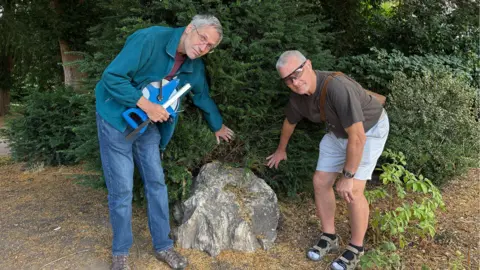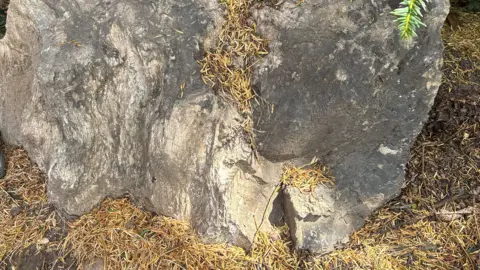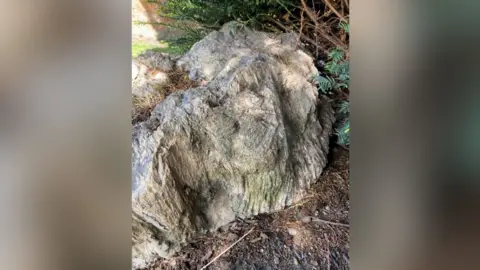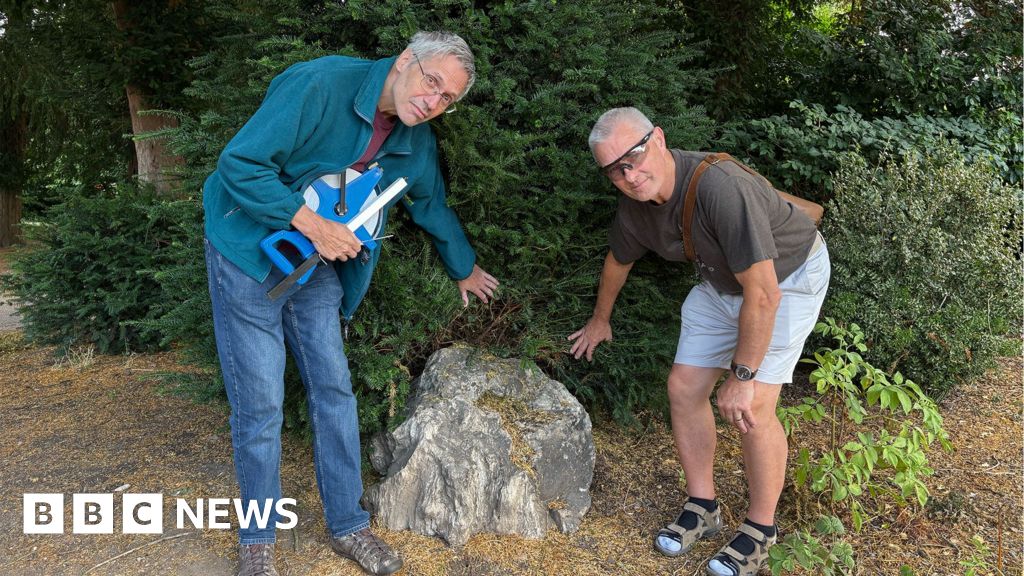BBC News, Derby
 BBC
BBC“It is just possible that it was nibbled off by a dinosaur”
Part of a fossilised tree has left two experts stumped after they started to investigate how it came to be in a park in Derby.
The stump of a juniper tree in Markeaton Park dates back to the Jurassic period and has been petrified and turned to stone over millions of years.
Archaeologist Stephen Leach and geologist Martin Whiteley said there are a number of examples of similar fossilised trees in Dorset, but they currently cannot fully explain why the stump of a juniper tree been found as far north as Derby.

Mr Whiteley, a geologist who has worked at the University of Derby said: “Many specimens have been found in southern Dorset, but particularly on the Isle of Portland.
“For centuries, people have been quarrying stone on the island and in that effort they’ve discovered many examples of these fossilised tree stumps.
“The big question for us is how did these characteristic Dorset fossils come all the way to Derby and why?
“That’s what’s really excited us. This is a long way from home. We have a real geological treasure trove here in Markeaton Park.
“On the outside, we can see a distinctive grain on it. This doesn’t represent the original bark of the tree, we think the bark has been lost.”
Stephen Leach, an archaeologist who worked at Keele University, said: “It is just possible that was nibbled off by a dinosaur.”
How does a tree become a fossil?
Mr Whiteley said: “A fossilised tree trunk is one that used to thrive and live in the past.
“In this particular case, these tree trunks date from way back in the geological period known as the Jurassic, about 140 million years ago, which is well known for its dinosaurs.
“At that time, this part of Britain was a bit further south than we are now.
“There had been large stands of trees, probably small forests of trees that when they died, the trunks fell down, the vegetation rotted, but the trunks themselves were quickly entombed within the surrounding sediment.
 Supplied
Supplied“Gradually over the course of possibly millions of years, much of the wooden material gets infiltrated by fluids, which replace the woody tissue effectively with stone.
“In this case, it’s been replaced with a very hard mineral called silica.”
However, the pair have a working theory on how the fossilised tree came to be there.
Stephen said: “A line of these [stumps] was created as part of a garden design. We’ve been trying to figure out when that occurred.
“We think that was in the 1830s or 1840s, because there was a fashion for putting these in gardens and parks.
“We found that the owners of Markeaton Hall in the 19th century were spending holidays in Weymouth, which is right next to Portland. Most likely they were brought up from Portland on the back of a wagon in the 1830s and 40s.
“That’s our theory at the moment.”

